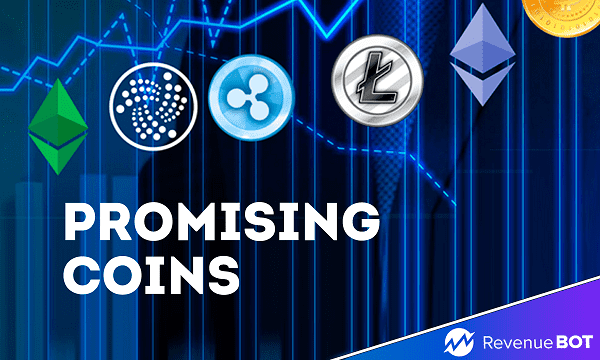
Numerous cryptocurrencies and tokens appear every day. Some of them are of a practical nature, which means they perform some sort of function. Others, on the contrary, have a purely entertainment purpose and may be in demand only due to the strong buzz around the project. RevenueBot has highlighted a few coins to watch out for.
Kava (KAVA)
KAVA is used as the utility and governance token. It serves to maintain network security and enables owners to vote on protocol changes.
Kava platform itself has two tokens: KAVA, a governance and security token designed to protect the network and vote on key parameters, and USDX, an algorithmically maintained stablecoin backed by a pledge of crypto assets.
It offers secured loans and stablecoins to major asset holders. The project team took part in the development of blockchain solutions for initiatives such as Ripple, Tezos, Tendermint/Cosmos, MakerDao, etc.
Token holders have a say in shaping the blockchain or system parameters, including the total amount of USDX that can be issued, the types of collateral accepted, the debt-to-collateral ratio, and the amount of fees.
KAVA is also a digital asset to ensure network security. Participants can delegate their voting power to validators (dedicated network nodes responsible for confirming transactions) through an exchange service, earning transaction fees and loan fees paid by users after CDP closes. The validator’s voting power is proportional to how many tokens they hold in their account.
EOS (EOS)
This project is a brainchild of Block One, run by Dan Larimer and Brendan Bloomer. Both have solid experience in cryptographic technologies and are actively engaged in their promotion. The project team also features Brock Pierce, an entrepreneur and venture capitalist.
The EOS network is an out-of-the-box platform for dApps allowing developers to use a full-featured authentication system. Accounts with different permission levels and their own locally secured data are primarily intended as a network feature.
The latest system updates allow access to a shared database between accounts. It is also possible to store user data on the local server using the blockchain. Restoring access to accounts is available through a variety of identity verification methods.
Server hosting and cloud storage are also considered part of the system. This allows app developers to create and run their software and web interfaces. Creators get access to the analytics of their applications and may set restrictions for specific software. These services are paid in EOS tokens.
Casper (CSPR)
CSPR is the Casper Network’s native token, used for paying transaction fees and compensating nodes for processing power and throughput, as well as for incentives to validators, who process network transactions and validate blocks on the network. The consensus mechanism governing the creation or addition of new blocks is the well-known Proof-of-Stake.
Casper Network represents the first blockchain based on the Casper CBC specification. The protocol is designed for enterprise deployment with a focus on flexible privacy permissions, low latency and security. Moreover, Casper empowers enterprises to choose between shared, permission-based and private network iterations, depending on their privacy preferences, without compromising security or performance. This led many Web3 businesses and teams to seek out a partnership with Casper.
Thanks to its forward-looking architecture, Casper is designed so that the platform is constantly evolving to meet the changing needs of its users and is as accessible as possible to developers of all skill levels. According to the white paper, Casper is streamlined to meet the needs of both the enterprise and the developer.
Conclusion
When investing in new coins, you keep an open mind on all the risks, because the chances of a coin remaining at the same price brackets or depreciating are sky-high.
This material is not a piece of financial advice and is for informational purposes only.
If you don’t want to count on luck, RevenueBot offers an automated trading interface. You can trade on the leading crypto exchanges, including: Binance, Bittrex, FTX, OKX and others. RevenueBot allows traders to create trading bots that provide stable passive income. Among the main advantages of the platform we can highlight the following:
- Fees for the service are charged only after the first profit, no prepayment required;
- RevenueBot’s native marketplace is a great way to buy a ready-made bot as well as to sell a lucrative configuration;
- The RevenueBot referral program enables you to earn without having to do any trading by yourself;
- RevenueBot uses a Dollar Cost Averaging (DCA) strategy, through which you can successfully trade and make profits over the long run;
- Automatic switching of trading pairs makes it possible to benefit from trading at any time. The bot itself will switch to another trading pair if the main one will not be able to do the earning.
You can learn more about the features of the platform on the RevenueBot official website.
